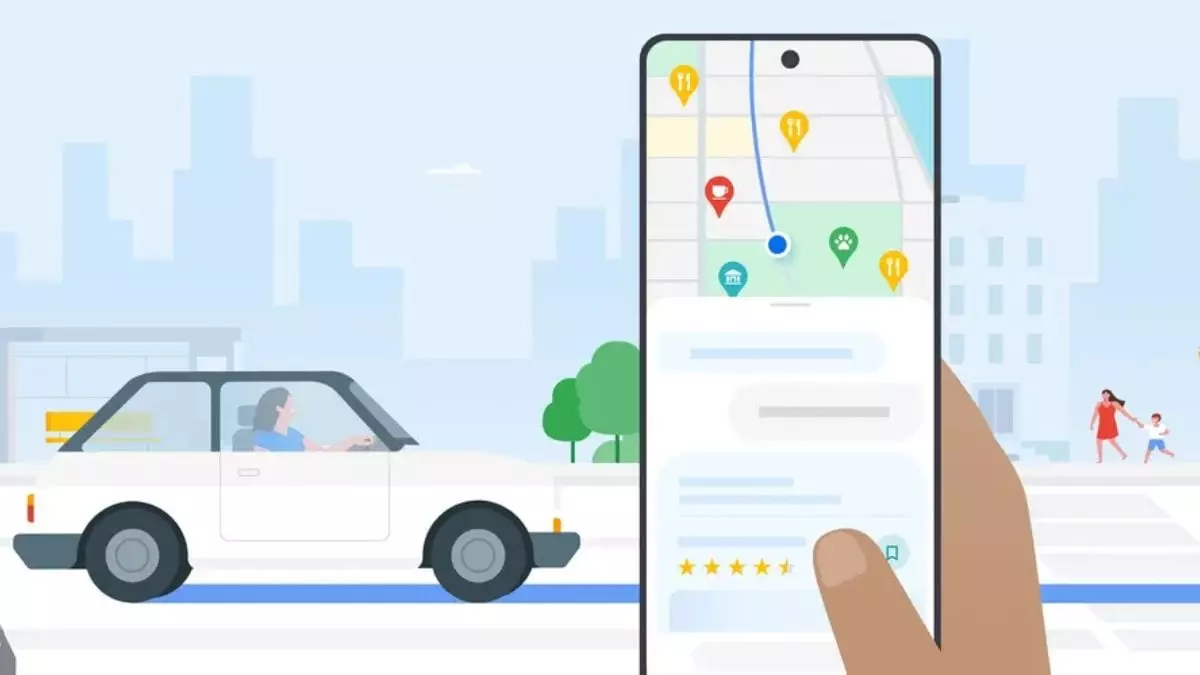In a rapidly evolving digital landscape, Google Maps continues to push the boundaries of what navigation applications can offer by integrating advanced artificial intelligence (AI) capabilities through its Gemini project. This ambitious endeavor demonstrates Google’s commitment to enriching user experience, as it not only aims to provide accurate navigation but also aims to create a deeper connection between users and their surroundings. Recently announced AI-powered features are set to dramatically transform how individuals explore and interact with new locales.
One of the standout features in this latest update is aptly named “Inspirations.” This feature marks a significant leap in how users can discover activities and attractions while navigating unfamiliar areas. Utilizing Gemini’s AI models, users can pose specific queries to Google Maps. For example, asking for “things to do with friends at night” will yield suggestions tailored to local offerings, such as live music venues, festive events, or even hidden gems off the beaten path. This personalized approach fosters a sense of discovery, transforming routine navigation into an exciting exploratory experience.
Google has created a system where these recommendations are visually represented as distinct cards within the application, allowing users to browse and access relevant information at a glance. Additionally, users will have the ability to inquire about important logistics, such as wheelchair accessibility or whether a location is kid-friendly. By incorporating such capabilities, Google Maps is transitioning from merely being a navigational tool into an integrated travel companion capable of enriching the user’s journey from beginning to end.
Navigational accuracy is crucial, especially when traversing complex urban environments. Google recognizes this need and has introduced several user-friendly enhancements aimed explicitly at tackling navigation challenges. The latest update will now include visual representations of lanes, crosswalks, and relevant road signs to assist users in making informed decisions on the road. This innovative approach minimizes the risks associated with last-minute lane changes and helps prevent the stress that can accompany navigating busy streets.
Moreover, trip planning is being revolutionized, allowing users to conveniently add stops and discover landmarks, restaurants, and attractions along their chosen route. The focus is not just on getting from point A to point B, but on enriching the journey itself, making it a more enjoyable experience filled with new discoveries. This enhanced navigation feature is currently rolling out in 30 metropolitan areas, with plans for further expansion.
Keeping users informed is vital to a reliable navigation experience. The new Google Maps updates include a platform for users to receive real-time updates regarding weather disruptions, such as flooded or poorly maintained roads. By staying informed of potential hazards, users can make better travel decisions and adjust their plans accordingly.
Furthermore, the application will offer improved arrival guidance, spotlighting nearby parking options while helping users save their parking spot locations to prevent the frustration of forgotten vehicles. Once parked, Google Maps will also provide walking directions from the vehicle to the destination, seamlessly integrating the entire journey into one fluid experience.
Another remarkable feature being rolled out is the Immersive View, which takes the Google Maps experience a step further by allowing users to visualize their planned routes as they would appear in the real world. This feature not only provides stunning visual representations but will now also integrate local weather and traffic conditions, enabling users to plan trips with greater foresight. The Immersive View will be made available in 150 cities globally, expanding its footprint and giving users research tools that enhance their travel planning.
The capability of displaying upcoming turns and potential parking locations adds another layer of utility to the Immersive View. By merging visual context with practical information, Google aims to create a holistic experience for users, equipping them with tools to navigate both familiar and foreign environments with confidence and ease.
The incorporation of AI technology into Google Maps symbolizes an exciting leap towards creating an intuitive navigation tool that understands users’ needs and preferences. As technology continues to advance, the potential for such features will undoubtedly expand, reinforcing Google’s role as an indispensable ally for travelers in an increasingly interconnected world.

